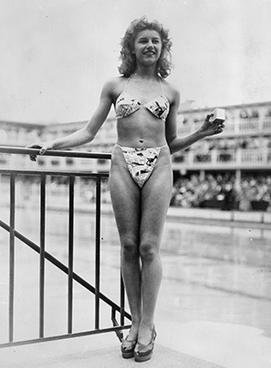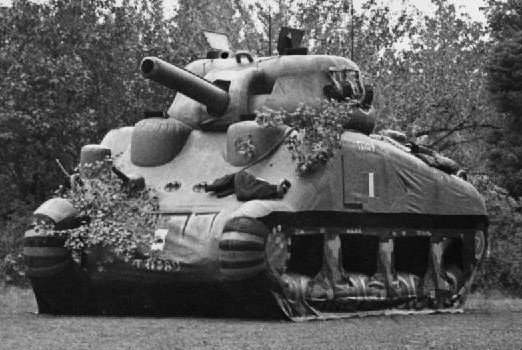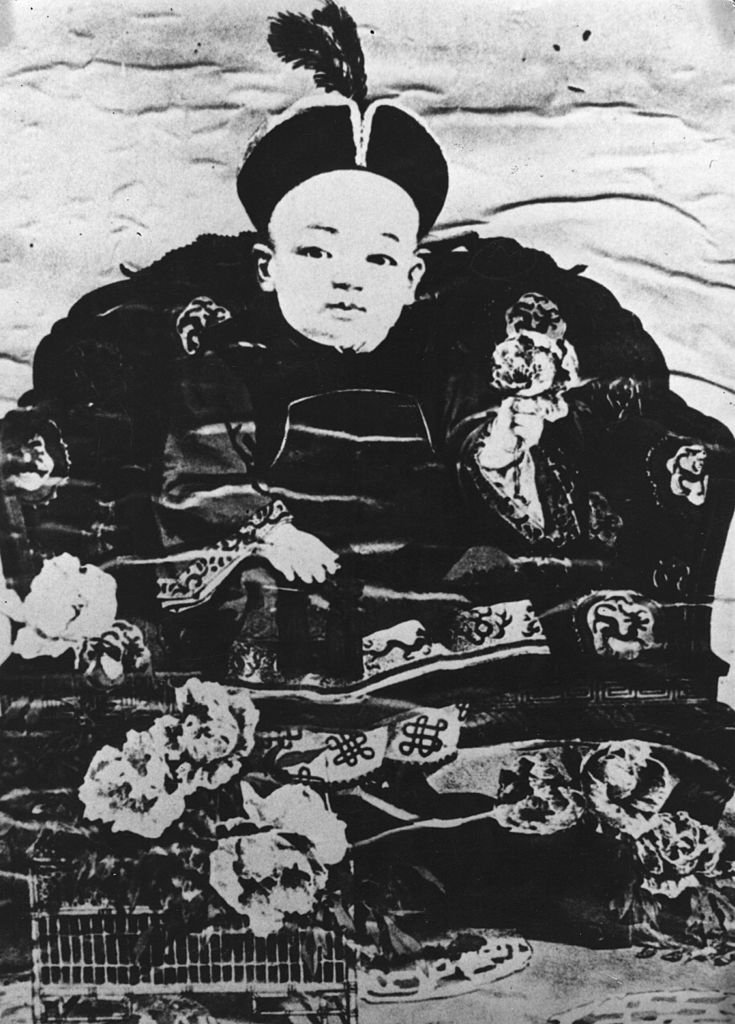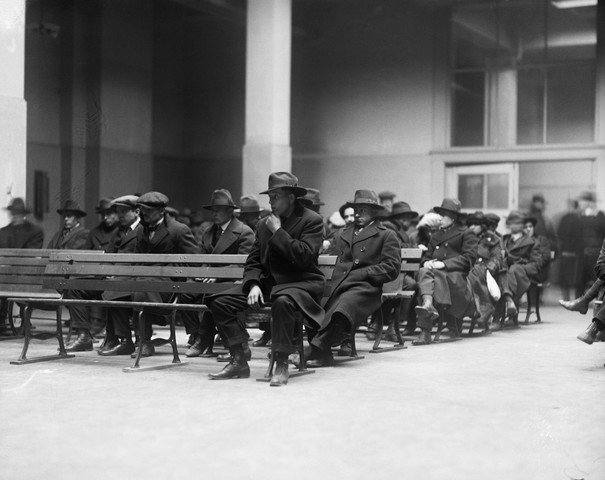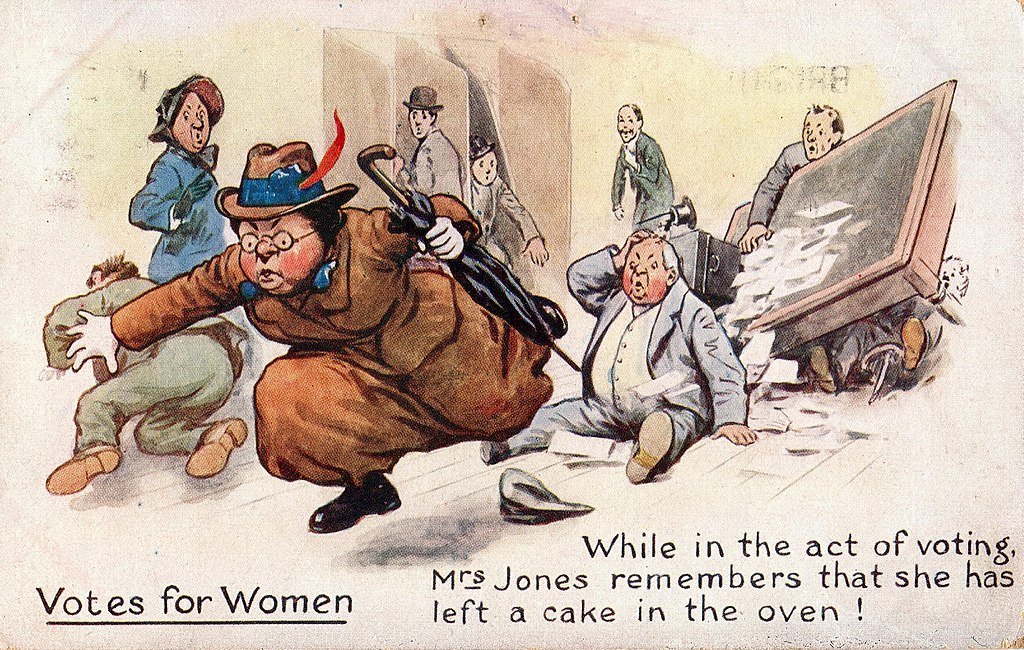US President Woodrow Wilson was less than well towards the end of his presidency (1913-21). This led to a powerful role for his wife, First Lady Edith Galt Wilson. Here, Richard Bluttal explains her role of ‘stewardship’ that could arguably make her the first female US president.
First Lady Edith Wilson’s official White House portrait.
It was a grueling period for both. First Paris among diplomats worldwide, then a cross country trip, 8-10,000 miles. They passed through scorching temperatures of the West, without any air conditioning. He complained of splitting headaches, at one stop experiencing blurred vision. She called for his doctor and said that her husband’s face was twitching and he was gasping for breath, similar to an asthma attack. Dr. Grayson, his doctor, drew up a series of mandates, stating “Complete rest, total isolation from his job, and no one should interfere with his health.” They returned home. On October 2, 1919, his wife went to check to see how her husband was doing. He said to her, “I have no feeling in my hand,” motioning to his left hand. Minutes later, after calling his doctor from downstairs, she heard a thump like a body falling from his bed. Running back upstairs, she found her husband unconscious and bleeding on the bathroom floor. Edith Galt Wilson had to make a quick decision - the country, or the life of her husband, President Woodrow Wilson. And why did he decide to arrange this tour, in support of the League of Nations?
From the standpoint of his October 2nd attack, what would the world know of this, let alone his administration and members of Congress. Very simple, nothing was to be said about the severity of his condition. The cover up had begun, and would continue until the end of his administration, close to two years later. One of his doctors told Edith that the President must not be disturbed so that nature can repair the damage. Edith’s response was, “How can I protect him from problems when the country looks to him as the leader? What do we tell the world?” On October 3rd, Dr. Grayson issued a bulletin, “The President is a very sick man. Diagnosis is a nervous exhaustion”. In the remaining days and weeks, additional bulletins said that the President was recovering nicely.
Wilson’s condition
How bad was the President’s condition? In Woodrow Wilson: A Medical and Psychological Biography Edith Weinstein writes, “The symptoms indicate that Wilson suffered from an occlusion of the right middle cerebral artery, which resulted in a complete paralysis of the left side of the body, a loss of vision in the left half vision of both eyes, weakness of the muscles of the left side of his face, tongue and jaw and pharynx accounted for his inability to speak.” All additional physicians that were allowed to see him remarked, “He looked as if he was dead.”
I think it’s important to understand what might have been the issue causing the anxiety and strain that led to this medical condition. Let us review the first World War, the United States entry and the League of Nations.
In the summer of 1914, the assassination of Archduke Franz Ferdinand, heir to the Austro-Hungarian Empire, ignited a continental war between the Central Powers of Germany, Austria-Hungary, and the Ottoman Empire and the Allies of France, Great Britain, Russia, and Italy. By the war’s end in 1918, the war would span the globe, claim more than 16 million lives, and change the world forever.
Germany planned to quickly defeat the British and French to the west before turning its full force east to Russia, but its initial thrusts into Belgium and northern France were checked. By the end of 1914, 400 miles of trench lines – the Western Front – stretched from Switzerland to the North Sea.
The United States initially remained neutral. But reports of German atrocities and submarine attacks on shipping bound for Britain and France – most infamously the 1915 sinking of the Lusitania, which killed 128 Americans – began to change American opinion.
In 1916 President Woodrow Wilson won re-election on the slogan “He kept us out of war.” But in April 1917, Germany’s resumption of unrestricted submarine warfare, along with its offer to help Mexico recover territories lost to the United States in 1848, led Wilson to ask Congress to declare war on Germany. American entry came none too soon. The British were running out of men, almost half of the French army had mutinied, and the Russian Revolution in 1917 would lead to Russia’s withdrawal from the war, allowing Germany to shift troops to the Western Front.
American troops conducted their first major action on May 28, 1918, when the 1st Division rolled back a German salient at Cantigny. Soon after, American forces were deployed along the Western Front, fighting in battles that have become part of American military lore. In early June, the 2ndDivision, including a brigade of U.S. Marines, drove German forces out of Belleau Wood after weeks of savage fighting. At Chateau Thierry the 3rd Division won the name “Rock of the Marne” for its stand on the Marne River. More Americans joined Allied counterattacks in summer and fall 1918, fighting with British, Canadian and Australian allies in Flanders and the Somme, and with the French at Soissons and across the Marne, Aisne, and Oise rivers.
On September 26 American forces launched the Meuse-Argonne Offensive, the largest battle in American history. Over 47 days, 1.2 million American troops drove the Germans back 40 miles to the vital railway hub of Sedan. More than 26,000 American soldiers died.
As American troops moved through the Meuse-Argonne, it became apparent that Germany had lost the war. An armistice was signed on November 11, 1918, effective at 11 a.m. – the eleventh hour of the eleventh day of the eleventh month.
After the war
In January 1919 the allies met in Paris to negotiate peace. Leaders of the victorious Allied powers—France, Great Britain, the United States and Italy—would make most of the crucial decisions in Paris over the next six months. For most of the conference, U.S. President Woodrow Wilson struggled to support his idea of a “peace without victory” and make sure that Germany, the leader of the Central Powers and the major loser of the war, was not treated too harshly. On the other hand, Prime Ministers Georges Clemenceau of France and David Lloyd George of Britain argued that punishing Germany adequately and ensuring its weakness was the only way to justify the immense costs of the war. In the end, Wilson compromised on the treatment of Germany in order to push through the creation of his pet project, an international peacekeeping organization called the League of Nations. President Wilson sought a piece based on his “Fourteen Points,” meant to foster international peace and cooperation. While some of the terms were included in the final treaty, including creation of a League of Nations, the pre-war colonial system remained in place. The Allies also compelled Germany to accept responsibility for starting the war, giving up territory and colonies, and pay crippling war reparations. His prime objective was to include his 14 points in the League of Nations.
It helps to examine the medical history of Woodrow Wilson. Historian Edwin A. Weinstein notes that Wilson had a history of cerebrovascular disorders dating back to 1896, sixteen years before he was elected president. Weinstein writes in his biography of Wilson, that the young Woodrow was a slow learner, and this could be a sign that he was dyslexic. He was always a high-strung person and subject to illnesses that were probably psychosomatic in nature. His letters often contain references to poor health, and his rhetoric frequently used metaphors regarding the body. Wilson was serving as an instructor at Princeton in 1896 when he suffered his first stroke. As Weinstein puts it, “Wilson’s first known stroke, in 1896, manifested itself in a weakness and loss of dexterity of his right hand, a numbness in the tips of several fingers, and some pain in the right arm. Aside from the pain, which was transitory, the symptoms and manner of onset indicate he had suffered an occlusion of a central branch of the left middle cerebral artery. This vessel supplies the regions of the left cerebral hemisphere that control movement and sensation for the contralateral extremities. The subsequent course of the disease suggests that the branch was blocked by an embolus from the left internal carotid artery.” In 1913, Wilson suffered another stroke, only this time, it was his left arm that was affected. Weinstein writes: The episode which affected Wilson’s left arm was particularly ominous from a clinical standpoint. The most likely diagnosis is that he had developed an ulcerated plaque in his right carotid artery from which an embolus had broken off. This meant that the cerebral circulation has been impaired on the right, previously unaffected, side of the brain. This evidence of bilaterality of involvement not only increased the risk of future strokes, but also created the possibility that enduring changes of behavior, based on insufficient blood supply and impaired oxygenation of the brain, might eventually occur.” Wilson seemed ill in 1915 and De Schweinitz was called. The doctor found evidence of hypertension and a hardening of the arteries, warning signs that his state of health was precarious. He informed Grayson, but Wilson continued his state of denial. Dr. Weinstein in his book also notes the following additional ailments: Wilson had multiple other neurological events that were presumably vascular in origin, November 1907 -- Developed weakness and numbness of fingers or right upper limb that lasted several months, July 1908 -- Two attacks of "neuritis" affecting the right upper limb, December 1910 -- Transitory weakness of the right hand. April 1913 -- Attack of "neuritis" involving right upper limb, May 1914 -- Abnormal retinal arteries observed, May-Sept. 1915 -- Episodes of transient weakness in his right hand.
Stewardship
What few people knew was that the President had kept his wife in the loop about all matters of state, including her sitting in on the League of Nations meetings. As noted above, the cover-up was Edith assuming complete reins of power. How was she to govern? In her memoirs she states very clearly, “The only decision that was mine was what was important and what was not, and the very important decision of when to present matters to the President. I asked the doctors to be frank with me, that I must know what the outcome would probably be, so as to be honest with the people. The recovery would not be hoped for, they said, unless the President was released from every disturbing problem, during these days of Nature’s effort to repair the damage done. ‘How can that be?’ I asked the doctors when everything comes to the executive is a problem. One doctor, Dr. Dercum leaned into me and said, “Have everything come to you, weigh the importance of each matter, and see if it is possible by consultations with respective heads of the Departments to solve them without the guidance of your husband.”
In the mornings, Edith Wilson would get up and begin her “stewardship,” the word she used to refer to her relative takeover of the West Wing. She would attend meetings in place of her husband, and when information needed to be passed to him, she would insist that she be the one to do it. In the evenings, she would take all necessary paperwork back to the residence, where Woodrow was presumably waiting, and inform him of what he needed to know. The next morning, she would return the paperwork to its original owner, complete with new notes and suggestions. She would also vet the carefully crafted medical bulletins that were publicly released. Continually she would say that the President needed bed rest and would be working from his bedroom suite. If it seemed like an odd arrangement, the people closest to the matter didn’t comment on it. They lined up at Edith’s door day in and day out, waiting for the notes that she passed back and forth between them and their leader. They went no further than the first lady, if they had policy papers or pending decisions for him to review, edit or approve, she would first look over the material herself. If she deemed the matter pressing enough, she took the paperwork into her husband’s room where she would read all the necessary documents to him.
While Edith maintained that she was simply a vessel for information and that all notes passed back to presidential staff were Woodrow Wilson’s own words, White House officials soon began to doubt the authenticity of the notes. For one, they had never seen the president himself write the words, and for another, they didn’t entirely trust the First Lady. William Hazelgrove in his book Madam President goes further,” the issue of a presidential signature is a vexing one. Presidents must sign many documents and the operation of government can be held up for want of signature. But here was a man paralyzed on his left side going in and out of consciousness. Edith “helped” the president by “steadying his right hand in guiding his pen.” Now his signature has changed, senators took this as evidence that the first lady was either signing documents or that she was guiding the president’s hand. Hazelgrove continues, “Edith did sign documents, probably many of them. The President was a paralyzed man who could barely talk, had lost control of his bodily functions, and lived in a post-stroke-twilight. There is no doubt Edith signed when necessary.”
Decision-making
The essence of Mrs. Wilson's usurpation lay in the absence of decision-making. She permitted only a handful of officials to see the president, and that only in the latter phase of his illness; and these audiences were often weirdly stage-managed in his darkened White House bedroom, usually in her inhibiting presence and that of Admiral Grayson. Many issues (e.g., the infamous "Red scare" raids of Attorney General Mitchell Palmer) were not brought to the president's attention, and it is uncertain whether he had the capacity to act even if he could have focused on them. When it became absolutely necessary to indicate what Wilson thought about a pending question, Mrs. Wilson would occasionally issue in her own handwriting a kind of bulletin from the sickroom reading "the president says" thus and so -- an unacceptable substitute for real decision memoranda.
She became the sole contact between the President and the cabinet. In fact, when Senator Albert Fall was sent by the Republicans to investigate the President’s true condition, Edith helped arrange Woodrow in bed so that he appeared presentable and alert. The President passed the test. The New York Times reported that “the meeting silenced for good the many wild and often unfriendly rumors of the President’s disability. “The essence of Mrs. Wilson's usurpation lay in the absence of decision-making. She permitted only a handful of officials to see the president, and that only in the latter phase of his illness; and these audiences were often weirdly stage-managed in his darkened White House bedroom, usually in her inhibiting presence and that of Admiral Grayson. Many issues (e.g., the infamous "Red scare" raids of Attorney General Mitchell Palmer) were not brought to the president's attention, and it is uncertain whether he had the capacity to act even if he could have focused on them. When it became absolutely necessary to indicate what Wilson thought about a pending question, Mrs. Wilson would occasionally issue in her own handwriting a kind of bulletin from the sickroom reading "the president says" thus and so -- an unacceptable substitute for real decision memoranda. It was a bewildering way to run a government, but the officials waited in the West Sitting Room hallway. When she came back to them after conferring with the President, Mrs. Wilson turned over their paperwork, now riddled with indecipherable margin notes that she said were the president’s transcribed verbatim responses. To some the shaky handwriting looked less like that written by an invalid and more like that of his nervous caretaker.
25th Amendment
The question of the 25th Amendment now comes into play. Why didn’t the Vice President immediately assume control? Amid delicate political negotiations over the League of Nations, as well as the multitude of items faced by every administration, hiding the health crisis of the president was something that could not be easily done. But it seems that this is exactly what the small circle around Wilson did, especially the first lady. Secretary of State Robert Lansing, a man who was with Wilson in Europe and an important part of the negotiations over the League of Nations, was the first to raise the alarm that the president was in an incapacitated state. Lansing pressed Dr. Grayson about the reports that the president had fallen ill. Dr. Grayson lied to Lansing, telling the secretary of state that Wilson was only suffering from “a depleted nervous system” and that the president’s mind was “not only clear but very active.” However, Joseph Tumulty was more candid and suggested to Lansing that the president had suffered another stroke. Lansing immediately declared that Wilson should transfer presidential power to Vice President Thomas R. Marshall. Loyal to Wilson, both Tumulty and Dr. Grayson objected.
Robert Lansing called a cabinet meeting on October 6, 1919, something he was not supposed to do without President Wilson’s knowledge. It was an important meeting because no administration had had to address a situation when a president was alive but incapacitated. The United States Constitution’s only words for such a situation before the passage of the 25th Amendment in 1967 are found in Article II, Section 1, Clause 6. It states as follows:
In Case of the Removal of the President from Office, or of his Death, Resignation, or Inability to discharge the Powers and Duties of the said Office, the Same shall devolve on the Vice President, and the Congress may by law provide for the Case of Removal, Death, Resignation or Inability, both of the President and Vice President, declaring what Officer shall then act as President, and such Officer shall act accordingly, until the Disability be removed, or a President shall be elected.
Wilson was not dead, had not resigned, and was disputing, at least through a proxy, that he could not discharge the powers of the presidency. Vice President Marshall did not want to appear too eager to become president, so he declared he would not act unless Congress declared Wilson incapacitated. Also, the first lady never wanted Marshall to be President. The problem with the constitution, as it was written then, was that there was a plan for succession of the vice president in case of death, but not of disability, as said by Dr. Markel.
The cabinet meeting on October 6th did little to define or answer any Constitutional questions. Nothing was decided except to see how Wilson’s health progressed. Robert Lansing resigned the following year on February 20 for an “assumption of presidential authority” by calling the cabinet meeting without Wilson’s approval.
Groundbreaking
William Hazelgrove, author of Madam President: The Secret Presidency of Edith Wilson notes the following, “Edith Wilson’s presidency was short – less than two years – but it was groundbreaking. Woodrow Wilson after his stroke could not perform the duties of the presidency and Edith stepped in to fill the role. Edith's guiding principle as president was to keep her husband alive by taking over his job and restricting access to him. Edith’s presidency fits the constitutional definitions of the duties of president. The Constitution defines the president’s first role as commander-in-chief of our military. World War I had just ended but the peace had not been settled. Edith was in the middle of the negotiations to get the Treaty of Versailles ratified and to implement the League of Nations with the United States as a member. Edith exercised five out of the six duties of the presidency. But history is not just facts. It is an accumulation of events and circumstances that interact with individuals upon the grand stage of life. Verisimilitude is by definition that which appears most true, but it is only through the exigencies of shared experience that we see truth. It is the journey after all and not the destination that matters most. It is hard for people to believe the United States had a woman president in 1919. Back then, women didn't take over struggling jewelry businesses or buy and drive cars, certainly not women who had only two years of formal education. But Edith Wilson did all of these things. We cannot know exactly what transpired in the Wilson White House, but since communications were by letters, there is a paper trail that gives us an indication. It is in those letters that we see Edith Wilson's involvement in running the United States from October 1919 to March 1921. “
Yet by deferring to her cabinet officers, and tackling a handful of high priority issues, Mrs. Wilson managed to keep the ship of state afloat. What rendered this possible was the institutional momentum of the executive branch. In the absence of direct guidance from the White House, officials filled the void with their own best judgment, and muddled through.
A few Republican critics of the president, such as Sen. Albert Fall (R-N.M.), railed against “petticoat government,” but the President’s Democratic allies largely circled the wagons, ignoring his obvious impairment, while adversaries in his own party, including Vice President Thomas Marshall, remained conspicuously silent.
Legacy
Unfortunately, in the absence of authoritative White House leadership, institutional forces could only keep the government machine well-oiled for so long. Eventually, Mrs. Wilson’s method of temporizing and triage proved inadequate. Wilson’s illness exacerbated his more negative qualities of stubbornness and his need to be right. He absolutely refused to compromise on the Versailles treaty to get it through Congress. Wilson was so far out of the loop due to his illness that he didn’t comprehend the extent of the opposition in the Senate and that the only way to get the treaty passed was with Henry Cabot Lodge’s reservations. Edith tried to convince him to change his mind. Because of his unwillingness, the Democrats didn’t have enough votes to ratify the treaty, and the United States ended up not joining the League of Nations. Had Wilson resigned at the outset of his illness when he had suggested it, and Vice President Marshall succeeded as President, or at least assumed the role until Wilson was better, a compromise would have been reached with Lodge and the treaty passed. The United States would have joined the League of Nations and played an active role in the international peace organization in the years leading up to World War II. If Edith had put the nation’s needs ahead of her husband, Wilson’s dream of America playing a significant role on the international stage would have come to fruition. As it was, his successor Warren Harding took America back to its isolationist stance.
What do you think of First Lady Edith Galt Wilson’s ‘stewardship’ of the American presidency? Let us know below.




